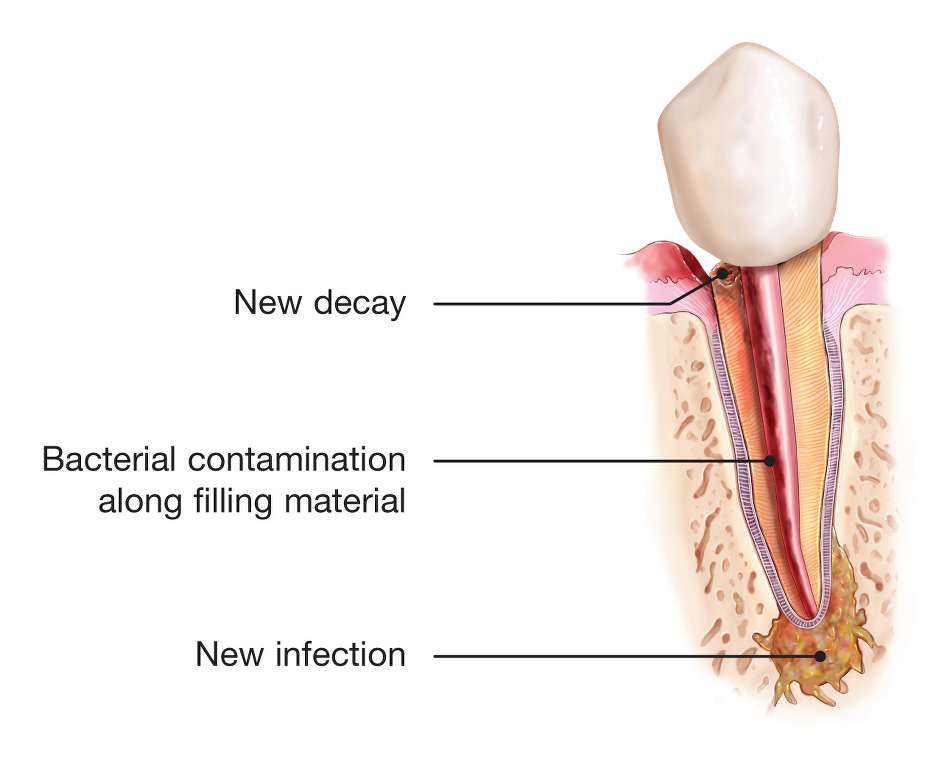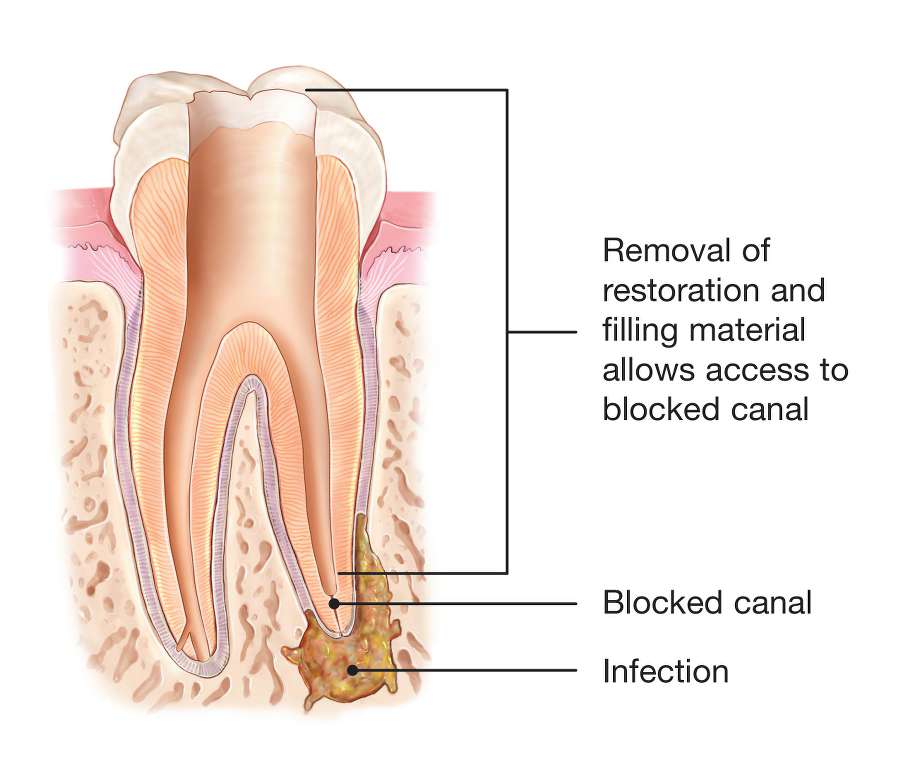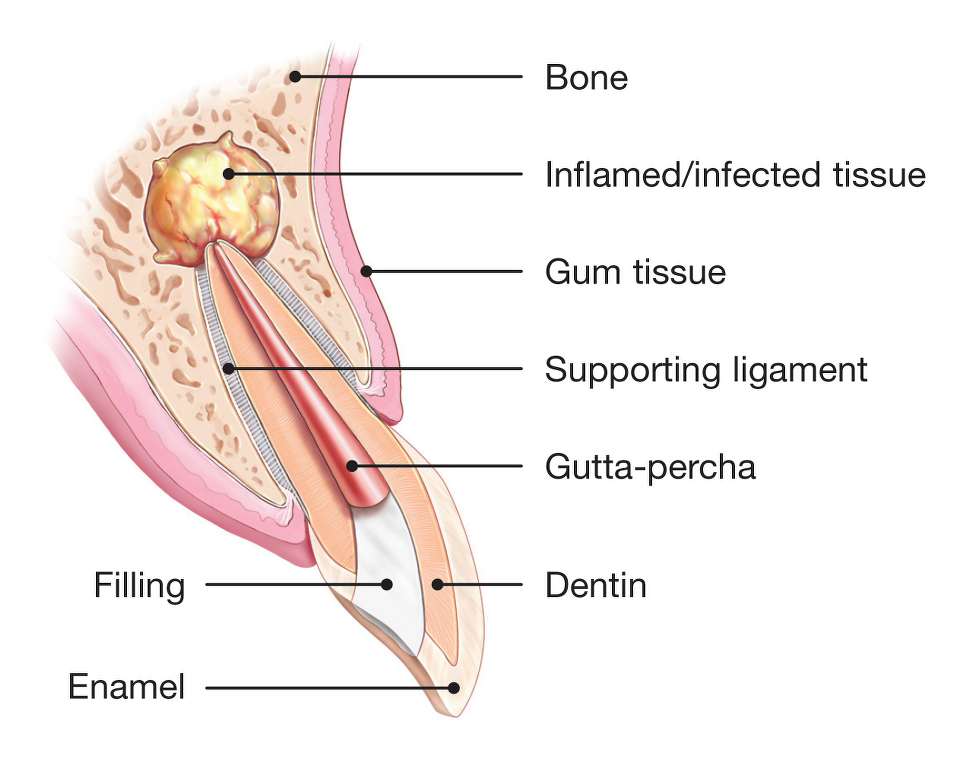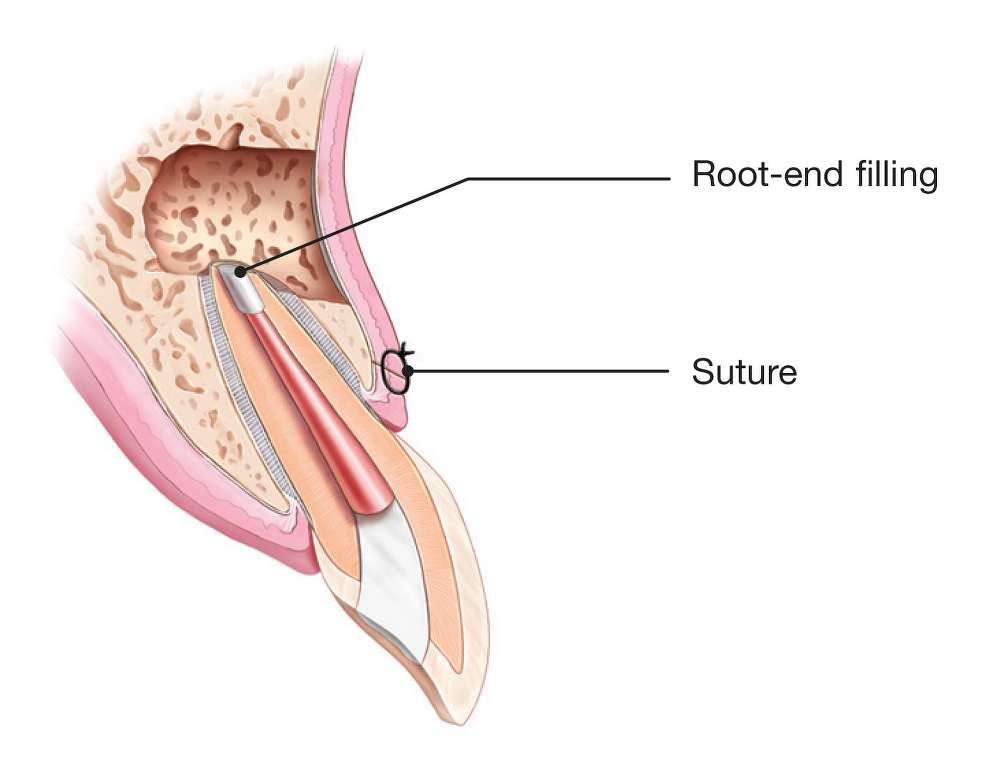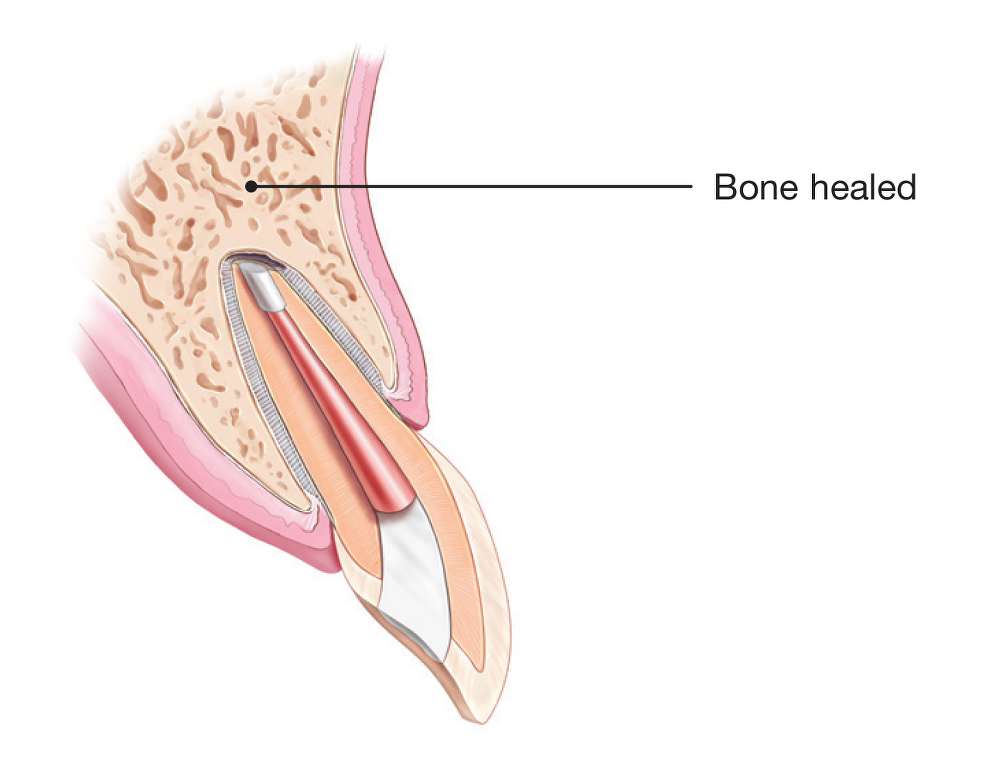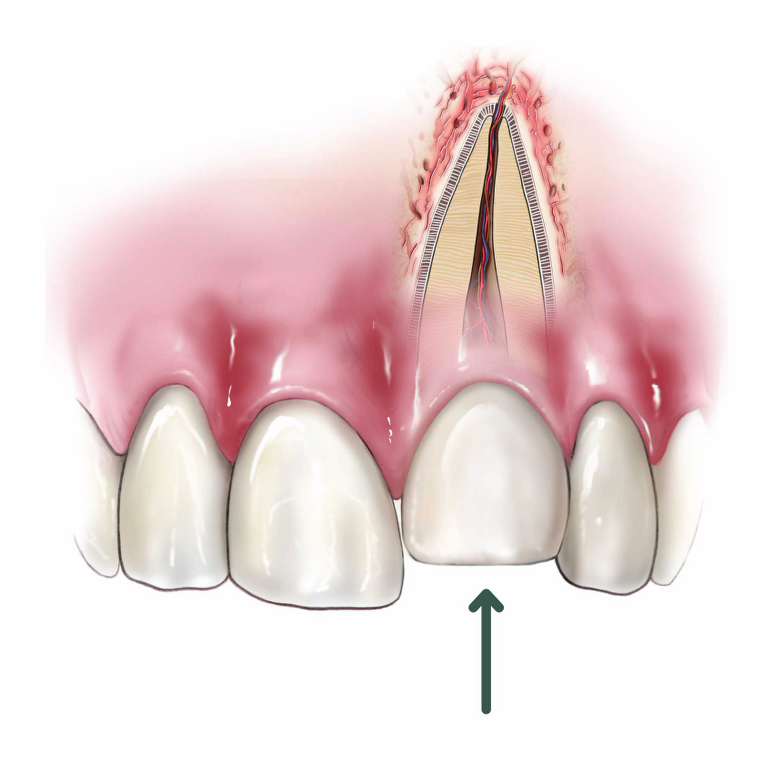ENDODONTIC CARE

ENDODONTICS
Endodontics is the branch of dentistry that focuses on the nerve tissue inside the roots of teeth. The word Endo•dont•ics—like most things in medicine—stems from greek etymology. ‘Endo’ is latin for inside and ‘dont’ is latin for tooth. (And ‘ic’ is latin for the study of.)
The tooth is very complex organ of the body. Besides nerve tissue, there are also blood vessels and lymph vessels (for drainage of infection). The nerves and blood vessels are called the dental pulp, and they extend from the pulp chamber in the crown, down the canals to the tip of each root. Enamel is what covers the visible part of the tooth, which is very hard, non-porous, and resistant to cavities. Dentin is what makes up the bulk of the tooth structure, including the roots. Dentin is still hard like bone, but is much more porous, and much more susceptible to cavities.
ROOT CANAL TREATMENT
Root canal treatment is performed for essentially two reasons. Either the nerve tissue (also known as the dental pulp) of the tooth is dying, or the nerve tissue is dead. This can be caused by many factors, such as a deep cavity, a crack or fracture in the tooth, or traumatic injury to the tooth (from a slip-and-fall or a skateboard accident).
The process can be extremely painful, or have no symptoms at all with the patient being completely unaware that there is a problem—everyone and every tooth is different.
Sometimes root canals can be completed in a single visit. However, other times two visits are required, with Dr. Healy placing an antimicrobial medication in the canals to further cure infection. Rarely, three or more visits could be needed to heal the tooth. Dr. Healy will discuss with you which type of treatment he anticipates your tooth will need.
RE-TREATMENT
The success of root canal treatment, when properly done, is usually exceptionally high. However, nothing in science and medicine are certain. Rarely, root canal treatment does not result in healing, and the reasons can vary:
- resistant bacteria that are able to survive the original root canal procedure
- reinfection via a cavity/tooth decay after the fact
- extra nerve canals that were not found or treated during the original root canal procedure
- cracks or fractures of the tooth
If the root canal is contaminated with bacteria, there there is likely a dental abscess or infection at the tip of the root. This can be extremely painful, or have no symptoms at all with the patient being completely unaware that there is a problem—everyone and every tooth is different.
Whatever the case, in order to heal the abscess at the tip of the root, the root canal needs to be re-done, and the canal space of the tooth re-disinfected. Dr. Healy will completely numb the tooth. He will then make a hole in the tooth or the crown to gain access to the old root canal filling. After the old root filling material is removed, the nerve canals disinfected. Dr. Healy will usually place an antimicrobial medication in the tooth, which will continue to disinfect and kill bacteria over several days. At a second visit, the medication is rinsed from the canals, and new gutta percha filling material is packed into each canal to seal the roots.
In most cases Dr. Healy will place a temporary filling in the tooth to protect the root canal. You will then return to your dentist for a permanent filling that bonds to and strengthens the tooth (called a core build-up).
ENDODONTIC SURGERY (APICOECTOMY)
In certain cases, a surgical procedure may be required to have the tooth heal from infection. This may be because:
The nerve canals are too calcified for conventional root canal treatment
An instrument or file has been broken off in the tooth, and cannot be removed
The infection is persistent, and does not respond to conventional root canal treatment
Endodontic surgery is usually painless, and in most cases patients return to work the next day, or even the same day.
Dr. Healy will completely numb the teeth and gum tissue. A small incision is made on the gum tissue, and the jaw bone and roots of the tooth are exposed. The infection is cleaned out and the tips of the roots are also treated and cleaned.
The tips of the roots are sealed with a filling material and stitches are placed to help the wound heal.
CRACKED TEETH
Cracked teeth can cause significant pain, but can be very difficult to diagnose and treat. Symptoms will vary, but common symptoms include:
- Pain that comes and goes without reason
- Pain to air or extreme temperatures
- Pain to biting or chewing, or pain caused by the tongue pushing on the tooth.
If there is a crack or fracture in the tooth, then there is direct exposure to the nerve tissue of the tooth through that crack. The severity of the crack has everything to do with what treatment is needed to receive the pain. The ultimate prognosis of the tooth, however, hingers on the extent of the fracture.
- Cracks that are confined to the crown of the tooth, or limited to enamel can be treated simply by sealing the crack. While root canal treatment is rarely needed, Dr. Healy will almost always recommend a crown be placed to prevent the crack from growing or propagating.
- If a crack extends beyond the enamel, and leads to the nerve (pulp) tissue, then root canal treatment will be needed to relieve the pain. Again, a permanent crown should be placed as soon as possible.
- If the crack extends down onto the root surface, below the gum-line, then treatment can become very complicated. In most cases, extraction of the tooth is recommended.
Dr. Healy is an expert in tooth cracks and fractures. If a cracked tooth is suspected, Dr. Healy will determine the extent of the crack, and review the prognosis of the tooth and all treatment options.
DENTAL TRAUMA
Dental Trauma occurs when teeth or jaws are physically injured, but a slip-and-fall, a bicycle accident, or basket ball or elbow to the face. Trauma to teeth is especially common with children and adolescents. Timing of treatment is usually urgent, but that depends on the type of traumatic injury. Treatment following a traumatic injury will be closely monitored by Dr. Healy. Examples of dental trauma include:
CHIPPED TEETH
Treatment for a chipped tooth varies, and has everything to do with how severe or extensive the chip/fracture is. As long as the nerve is not exposed, root canal treatment is usually not needed, and a simple filling will fix the problem.
If the chip extends to the dental pulp and exposes the nerve, then further treatment is needed. Dr. Healy may elect to place a medication over the exposed nerve and seal the tooth, or he may recommend conventional root canal treatment.
Fractured Teeth
Sometimes trauma to the tooth will result in the root or the jaw bone being fractured, much like a broken bone in your arm or leg. Often Dr. Healy will place a splint on the the tooth which acts like a cast to encourage healing. If the nerve tissue is damaged by the crack, root canal treatment might be needed.
Dislocated Teeth
A blow to the tooth can be strong enough that it actually displaces the tooth, extruding it from the socket, pushing it backward into the jaw bone, or even crushing it inward and upward. Tooth dislocations are very complicated, but at the same time very treatable. Dr. Healy will reposition and splint the teeth. The need for root canal treatment is more likely for dislocated teeth.
Avulsed (Knocked Out) Teeth
Sometimes a tooth is knocked clear out of the socket. This is the most urgent of all dental traumatic injuries. The tooth should be located immediately. If it cannot be replanted into the tooth socket immediately, then it should be stored in milk, saliva, or a special solution called Save-A-Tooth. Never store the tooth in water. If your tooth is knocked out, proceed immediately to your dentist or Dr. Healy.






